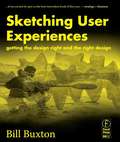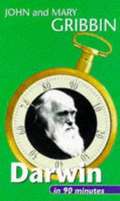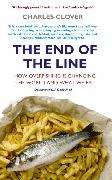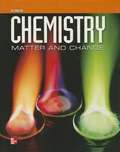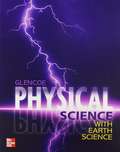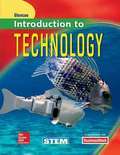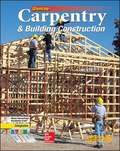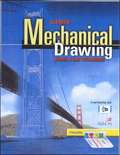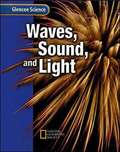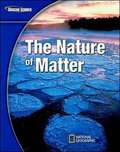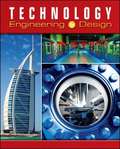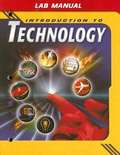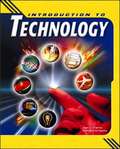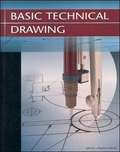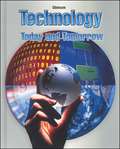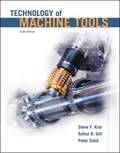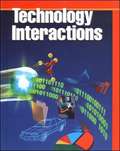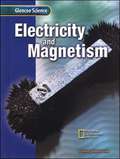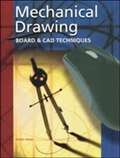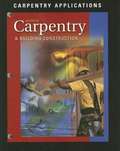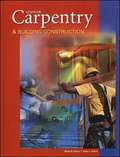- Table View
- List View
Sketching User Experiences: Getting The Design Right And The Right Design (Interactive Technologies)
by Bill BuxtonSketching User Experiences approaches design and design thinking as something distinct that needs to be better understood―by both designers and the people with whom they need to work― in order to achieve success with new products and systems. So while the focus is on design, the approach is holistic. Hence, the book speaks to designers, usability specialists, the HCI community, product managers, and business executives. There is an emphasis on balancing the back-end concern with usability and engineering excellence (getting the design right) with an up-front investment in sketching and ideation (getting the right design). Overall, the objective is to build the notion of informed design: molding emerging technology into a form that serves our society and reflects its values. Grounded in both practice and scientific research, Bill Buxton’s engaging work aims to spark the imagination while encouraging the use of new techniques, breathing new life into user experience design. Covers sketching and early prototyping design methods suitable for dynamic product capabilities: cell phones that communicate with each other and other embedded systems, "smart" appliances, and things you only imagine in your dreams Thorough coverage of the design sketching method which helps easily build experience prototypes―without the effort of engineering prototypes which are difficult to abandon Reaches out to a range of designers, including user interface designers, industrial designers, software engineers, usability engineers, product managers, and others Full of case studies, examples, exercises, and projects, and access to video clips that demonstrate the principles and methods
Darwin in 90 Minutes
by John Gribbin Mary GribbinIn this easy-to-read series, eminent science writers John and Mary Gribbin look at the lives and work of eight major scientists. Each book is accessible enough to be read for fun but informative enough to appeal to students of science. The iconic Albert Einstein emerges as a dashing ladies' man and the greatest scientist of his time; but why did Charles Darwin wait for decades before going public with his ideas on evolution? How was Marie Curie's great work shaped by her childhood experiences of oppression under the Czars? And what was Edmond Halley, of comet fame, doing as Captain of a King's Ship and later spy for the Crown? An introduction and afterword places each scientist's work in the context of the development of their subject.
The End of the Line: How Overfishing Is Changing the World and What We Eat
by Charles CloverWe have reached a pivotal moment for fishing, with seventy-five percent of the world's fish stock either fully exploited or overfished. If nothing is done to stop the squandering of fish stocks the life of the oceans will face collapse and millions of people could starve. Fish is the aspirational food for Western society, the healthy, weight-conscious choice, but those who eat and celebrate fish often ignore the fact that the fishing industry, although as technologically advanced as space travel, has an attitude to conservation 10,000 years out of date. Traveling on an industrial scale in the North Sea smashes everything it does not catch, taking 16 lbs of dead marine animals to produce just 1 lb of sole. Regulation isn't working, fishermen must cheat or lose money, dolphins and other wildlife (seabirds, turtles, sharks) are killed unnecessarily and fish stocks are collapsing despite the warnings. Because of the shortage of traditional varieties the market has moved on, competing, sometimes illegally, with local fishermen in the waters off Africa and in the Indian Ocean and plundering the high seas and the ocean depths all the way to Antarctica.The End of the Line looks at the problem and proves that we, as consumers, have to change if the situation is to improve.
Glencoe Chemistry: Matter and Change
by Thandi Buthelezi Laurel Dingrando Nicholas Hainen Cheryl Wistrom Dinah ZikeThis textbook on Chemistry covers Introduction to Chemistry, Analyzing Data, Electrons in Atoms, Chemical Reactions, Gases, Mixtures and Solutions, Acids and Bases, Electrochemistry, Hydrocarbons, The Chemistry of Life, Nuclear Chemistry and many more...
Physical Science with Earth Science
by Ralph Feather Charles William Mclaughlin Marilyn Thompson Dinah ZikeThe book covers different topics that can be classified under the two main categories Earth science ( that investigates Earth and space) and Physical science (that studies matter and energy.)
Physical Science with Earth Science
by Ralph Feather Charles William Mclaughlin Marilyn ThompsonNIMAC-sourced textbook
Introduction to Technology
by Alan J. Pierce Dennis KarwatkaStudents will discover technology through project-based pedagogy with Glencoe's Introduction to Technology! Teachers and students are offered content that is driven by projects to facilitate hands-on understanding and learning, while academics are integrated in unit-based projects and chapter-based Technology Labs. Students are invited to play and "crack the code" with the Technology Time Machine game while learning the key content of the technology literacy standards. Prepare students for TSA competitive events with prep activities embedded throughout the content and end-of-chapter assessments. Rigorous academic content is fully supported, especially in math, geometry, and science, with STEM activities throughout. Point-of-use academic correlations are included to ease possible academic credit application. Teachers can meet Perkins mandates for academic excellence with extra activities in the Student Edition and in the Project Applications Workbook. Careers profiles, Tech Stars, Imagine This! and Eco Tech features enhance the content with relevant information and challenging activities.
Carpentry and Building Construction
by Mark D. Feirer John L. FeirerThis book has been designed as a basic text for students in wood technology classes at the high school, vocational school, and community junior college levels.It will also be helpful to those in apprenticeship training and to do-it-yourselfers who wish to undertake building or remodeling projects.
Glencoe Mechanical Drawing: Board and CAD Techniques
by Glencoe McGraw-Hill StaffProject-based learning prepares students for professional certification with Glencoe Mechanical Drawing: Board and CAD Techniques! Endorsed by the American Design Drafting Association (ADDA), this text includes Prep for ADDA activities. Step-by-step applications, design problems, and drafting problems prepare students for professional excellence and certification. Project-based learning is supported with unit-based projects that integrate technical math and culminate in Build Your Portfolio activities. Help your students get ready for competitive events like the TSA and SkillsUSA with prep activities embedded throughout the content and end-of-chapter assessments. Rigorous academic content is supported, with a special emphasis on math, geometry, and science, with STEM activities. Point-of-use correlations ease possible academic credit application. Extra activities in the Student Edition and workbook help you meet Perkins mandates. The appendix features Math (including algebra and geometry), abbreviations and symbols, pipe symbols, and reference tables (ASME, ANSI, ISO).
Mechanical Drawing: Board & CAD Techniques
by Jay D. HelselProject-based learning prepares students for professional certification with Glencoe Mechanical Drawing: Board and CAD Techniques! Endorsed by the American Design Drafting Association (ADDA), this text includes Prep for ADDA activities. Step-by-step applications, design problems, and drafting problems prepare students for professional excellence and certification. Project-based learning is supported with unit-based projects that integrate technical math and culminate in Build Your Portfolio activities. Help your students get ready for competitive events like the TSA and SkillsUSA with prep activities embedded throughout the content and end-of-chapter assessments. Rigorous academic content is supported, with a special emphasis on math, geometry, and science, with STEM activities. Point-of-use correlations ease possible academic credit application. Extra activities in the Student Edition and workbook help you meet Perkins mandates. The appendix features Math (including algebra and geometry), abbreviations and symbols, pipe symbols, and reference tables (ASME, ANSI, ISO).
Waves, Sound, and Light
by Glencoe Mcgraw-HillDiscover the Flexibility to Teach Science Your Way!. "Glencoe Science: Waves, Sound, and Light," a module in the Glencoe Science 15 book series, provides students with accurate and comprehensive coverage of middle school National Science Education Standards. Concepts are explained in a clear, concise manner, and are integrated with a wide range of hands-on experiences, critical thinking opportunities, real-world applications, and connections to other sciences and to non-science areas of the curriculum. Co-authored by National Geographic, unparalleled graphics reinforce key concepts. A broad array of print and technology resources help differentiate and accommodate all learners. The modular approach allows you to mix and match books to meet your specific curriculum needs.
Technology: Engineering & Design (6th edition)
by Sharon A. Brusic James F. Fales Vincent F. Kuetemeyer"Technology: Engineering & Design" helps students understand and apply technology presented in an engineering context. It describes the engineering design process and how it is used to solve technological challenges. In this program students explore the nature of technology, technology systems, and the history, evolution, and characteristics of technology as well as its impact on our society, culture, economy, politics, and environment.
Introduction to Technology Lab Manual
by Glencoe/McGraw-HillHands-on activities help students understand and apply key concepts.
Introduction to Technology (3rd edition)
by Dennis Karwatka Alan J. PierceIntroduction to Technology creates excitement in middle school students about the potential of technology! Introduction to Technology helps students understand and work with technology. The seven units of Introduction to Technology cover: Nature of Technology - why we study technology and its important concepts; Engineering Design - how technology works including design, problem solving, drafting and modeling; Communication, Biotechnology, Manufacturing, Construction and Transportation. Students will learn about technology and do technology.
Basic Technical Drawing (8th Edition)
by Henry Cecil Spencer John Thomas Dygdon James E. NovakBasic Technical Drawing is a classroom textbook and reference book for the beginning student of technical drawing. It provides essential information as clearly and completely as possible in straightforward language and with ample illustrations. This new edition provides updated information on the basics of technical drawing; yet it retains the practical focus and open format that have made it popular with thousands of students.
Technology: Today and Tomorrow (5th edition)
by James F. Fales Vincent F. Kuetemeyer Sharon A. BrusicTechnology: Today and Tomorrow is a technology literacy textbook for high school. It uses the systems approach (input, process, output, feedback) to inform students about communication and bio-related technology. The text teaches students about the nature of technology and its role in our lives. It provides information about the history and evolution of technology; the characteristics of technology; and its impact on our society, culture, economy, politics and environment. Hands-on activities give students experience in designing and using technology. "Directed" activities provide step-by-step procedures. "Design and problem solving" activities guide students to use the problem-solving process to develop their own solutions. Cross-curricular activities in the Chapter Review pages relate technology to other subjects, such as science, mathematics, language arts and social studies.
Technology of Machine Tools (6th edition)
by Steve F. Krar Arthur R. Gill Peter SmidTechnology of Machine Tools provides state-of-the-art training for using machine tools in manufacturing technology, including up-to-date coverage of computer numerical control. It includes an overview of machine trades and career opportunities followed by theory and application. The text is structured to provide coverage of tools and measurement, machining tools and procedures, drilling and milling machines, computer-aided machining, and metallurgy. There is expanded coverage of computer-related technologies, including computer numerical control (CNC) and computer-aided design and manufacturing (CAD/CAM).
Technology Interactions (2nd edition)
by Henry R. Harms Neal R. SwernofskyTechnology Interactions is the only text that supports any modular technology education program for grades 6-10. Hands-on activities, fascinating facts, problem-solving exercises and other features to help students understand and experience technology. Topics include computer animation, health technologies, robotics, lasers and fiber optics, and much more. Students apply technical principles to the solution of problems by actually designing and building projects. Learning experiences at the end of each chapter sharpen students' reasoning and analytical skills by utilizing their creativity. Problem-solving emphasis helps relate technology theory to real-world activities and problems. Linking to Mathematics, Science, and Communication activities build cross-curricular skills. Fascinating Facts provide interesting sidebars that relate to each chapter's content. Career Pages highlight the qualifications and employability skills needed for various occupations.
Glencoe Science: Electricity and Magnetism
by McGraw-HillTopics covered in this book are electricity, magnetism, electronics and computers.
Carpentry and Building Construction (Carpentry Math)
by Glencoe Mcgraw-HillThis carpentry textbook focuses on math used in construction.
Carpentry and Building Construction: Safety Guidebook
by Glencoe Mcgraw-HillThis comprehensive carpentry textbook focuses on residential construction that is also applicable for light commercial construction.
Mechanical Drawing Board and CAD Techniques (13th Edition)
by Thomas E. French Jay D. HelselThis completely revised comprehensive drafting book for high school includes solid drafting instruction, board drafting techniques, and computer aided drafting techniques. Each chapter provides a large number of practice problems, "Tech Math" incorporating math skills needed for the covered topics, and "Success on the Job" employability skills needed on the job.
Carpentry and Building Construction: Carpentry Applications
by Glencoe Mcgraw-HillProvides skill-building job sheets with illustrated instructions for carpentry procedures.
Carpentry & Building Construction (Sixth edition)
by Mark D. Feirer John L. FeirerCarpentry & Building Construction retains its focus as an essential text for students of carpentry and general wood technology. This edition maintains a detailed coverage of wood framing techniques.
